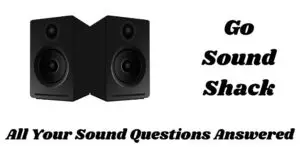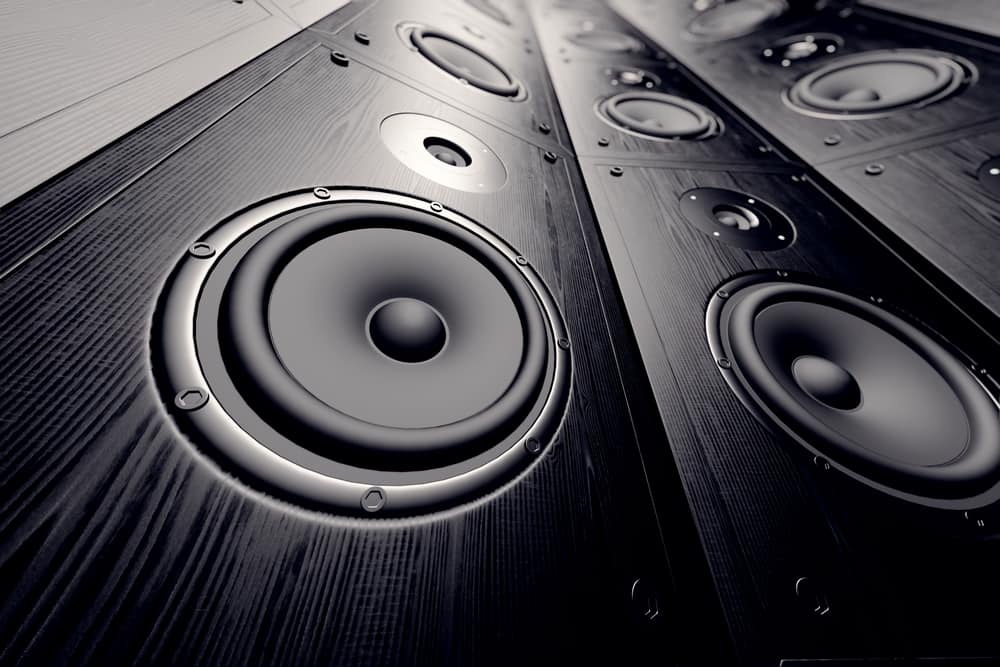Table of Contents
[amazon box=”B0002KVQBA,B000092TT0,B00MH42BBI,B07D4734HR,B078P4291Z,B07BTRMBYS,B07D15L4NC,B073BVWRSP,B01MSYQWNY” template=”table”]
*This post may contain affiliate links. As an Amazon Associate we earn from qualifying purchases.
People like to listen to things. Listening comprises one-fifth of our sense-based perception, so this is only natural. Also, since we are also very curious by nature, we tend to like to listen to new things.
To this end, people have developed innumerable ways of creating new sounds, and the dawn of the modern age made sharing these new sounds much easier. That said; it is important to know how such sounds are produced.
Now, everyone knows the premise of a drum, and most people understand the basic idea behind a guitar, but how many people know how speakers work? It is among the most universal means of transmitting sound under raw vocal speech, so it should be known how they function.
What Is A Speaker?

In simple terms, a speaker is a device that produces and amplifies sound from electrical signals inputted into it. Practically every source of electrically produced sound comes from one form of a speaker or another.
From televisions to telephones, speakers are an ever-present factor in the life of a modern citizen. Due to speakers being so common, it is easy to overlook the details behind them.
Many people don’t know the first iteration of our modern speaker was developed as a prototype in 1921 by C.W. Rice and E.W. Kellogg. They filed the patent in 1925, and the basic design still holds up today.
The prototype came at a time of rising demand for electrical communication. It was the Roaring Twenties, the age of the radio and the rise of the television.
With all this innovation, standard horns used on record players simply would not suffice. Today, electric speakers are everywhere. Every phone, every television, every building with an intercom relies on this precious technology.
It is the method we transmit and amplify information in the form of audio. Really makes one think about how speakers work.
How Sounds Work
Before the details of how speakers work as a sound producer, it is important to discuss how sounds themselves work. Sound exists as a wave, a reoccurring event that acts as a disturbance which is emitted from one object, passes through a medium of transmission and is picked up by our ears and perceived as sound.
Air is the most identified medium, though the sound may pass through solids and liquids, though not as smoothly. When the medium is air, the disturbance is a rising and falling of air pressure caused by the vibrations of the object emitting the sound.

Sound waves, being waves, have a certain set of properties. The details surrounding these properties are what let us distinguish one sound from another. The properties of a sound wave are as follows:
- Frequency
- Wavelength
- Amplitude
- Envelope
- Harmonic Content
Frequency deals with how often the wave takes place. This is most often determined by measuring how far apart one peak in the wave is from another. One peak to another is one wave.
Counting these in a given space determines how frequently the wave occurs, hence “frequency.” Frequency is measured in a unit called a Hertz, which represents how many waves occur in a second.
In regard to what we hear, differences in frequency are differences in tone. As frequency goes up, so does the pitch of the sound we hear.
Human ears can’t hear all frequencies, however. The human range of hearing is approximately 20 to 20,000 Hertz. For reference, dog whistles sound off at a range of 23,000 to 54,000 Hertz.
Wavelength is the inverse of frequency and is used to describe each individual wave. A shorter frequency means each individual wave must be longer in order to occupy the same space at the same time.
It is also important to note that sound waves travel at a constant speed, known as the speed of sound or the sonic barrier.
Amplitude is the measure of the size of the disturbance the wave consists of. In the case of sound, this is described as volume.
If the wavelength is the length of the wave, the amplitude is the wave’s height. In essence, it is the intensity of the disturbance.
Envelope describes the changes of amplitude a frequency across the duration of the singular sound. This is part of what helps distinguish a note played on a guitar compared to the same note on a piano.
It describes the chronological parts of the sound in terms of attack, decay, sustain and release.
Lastly, harmonic content details the simultaneous components of the sound. For example, when an A note is played on a piano, there are more notes present in the sound then the frequency associated with A.
The frequency of the A note is simply the loudest frequency played, and is referred to as the fundamental. Without the other frequencies, or overtones, there would be nothing but what is called a sine wave, the simplest form of sound.
It may be interesting to note that sound is not necessarily real, in the sense that it is not a property of anything that exists. Sound is just something we perceive as a result of real things, such as sound waves, interacting with each other.
Color is similar in that even though, for example, specific wavelengths of light exist, and we perceive those wavelengths as specific colors, the colors themselves are only a construct of our minds to perceive the world.
How Speakers Work
Now that the details concerning sound itself are covered, the technology in which those sounds are produced may be properly discussed.
The simplest way to convey how speakers work is to say produce precise, electrically controlled vibrations rapidly. Naturally, there is a bit more to it than that.
The structure of a speaker is fairly basic. The diaphragm is a cone-shaped piece typically made from plastic, cloth or a light metal, and is the piece that vibrates to produce sound.

It is held within the framework of the speaker by the surround, a piece of elastic material that keeps the cone secure while still allowing it to vibrate. On the inside, the diaphragm is connected to the voice coil, a wound piece of metal, typically iron, that causes the diaphragm to move.
The wires that feed electricity into the speaker as a whole connect directly to this coil. Behind it is a permanent magnet of strength proportionate to the speaker’s size and category.
When electrical signals are fed into the speaker, they pass through the coil, turning it into an electromagnet of an intensity corresponding with the electrical signal.
The electromagnet then will be pulled toward and repulsed away from the permanent magnet in rapid succession, which in turn will vibrate the diaphragm in a specific way.
Every time the cone is pushed out and pulled back in as it vibrates, it creates a wave of air pressure, which results in a sound.
The speed at which the vibration travels through the diaphragm of the speaker determines the produced frequency. With this in mind, speakers are generally set into three basic categories: midrange, woofers, and tweeters.
Midrange is the common ground and produces a range of frequencies near the center of the spectrum. Woofers are bigger, and thus a vibration takes longer to travel through its diaphragm.
This makes them the best at producing low-frequency sounds. Conversely, tweeters are best at high-frequency sounds, since their small size makes the vibrations much quicker.
The volume of the produced sound has to do with how much power is behind each vibration of the diaphragm. This primarily has to do with the amount of power being fed into the electromagnet.
Simple enough, more power means stronger vibration means louder sound. Naturally, there are other factors as well. The strength and condition of the permanent magnet behind the voice coil plays just as big a role in how much it and the electromagnet repel and attract each other.
Another key component of a speaker’s performance is its enclosure, or simply the housing in which the main components are kept.
This plays a role when it is considered that since the diaphragm moves back and forth to vibrate and create a sound that sound is projected both outward and inward. The type of enclosure deals with the sound projected inward.
Sealed enclosures, where no air can escape the interior of the speaker, can only project the outward sound.
However, the shifting in air pressure in the sealed space is constantly applying pressure to the diaphragm, helping it snap back to its resting position before the next sound is played, resulting in a more precise speaker.
On the other hand, bass reflex enclosures have an opening in the front, directing the sound projected inward back out, projecting more sound overall at the cost of the precision benefit of the sealed enclosure.
Why Know How Speakers Work
Speakers are everywhere, in phones, televisions, radios, even car horns and digital alarm clocks. They are as essential to the modern world as screens and much more common.
They help us make the most of our sense of hearing every day and, in doing so, help us just a bit make the most of our lives.
[amazon box=”B0002KVQBA,B000092TT0,B00MH42BBI,B07D4734HR,B078P4291Z,B07BTRMBYS,B07D15L4NC,B073BVWRSP,B01MSYQWNY” template=”table”]

